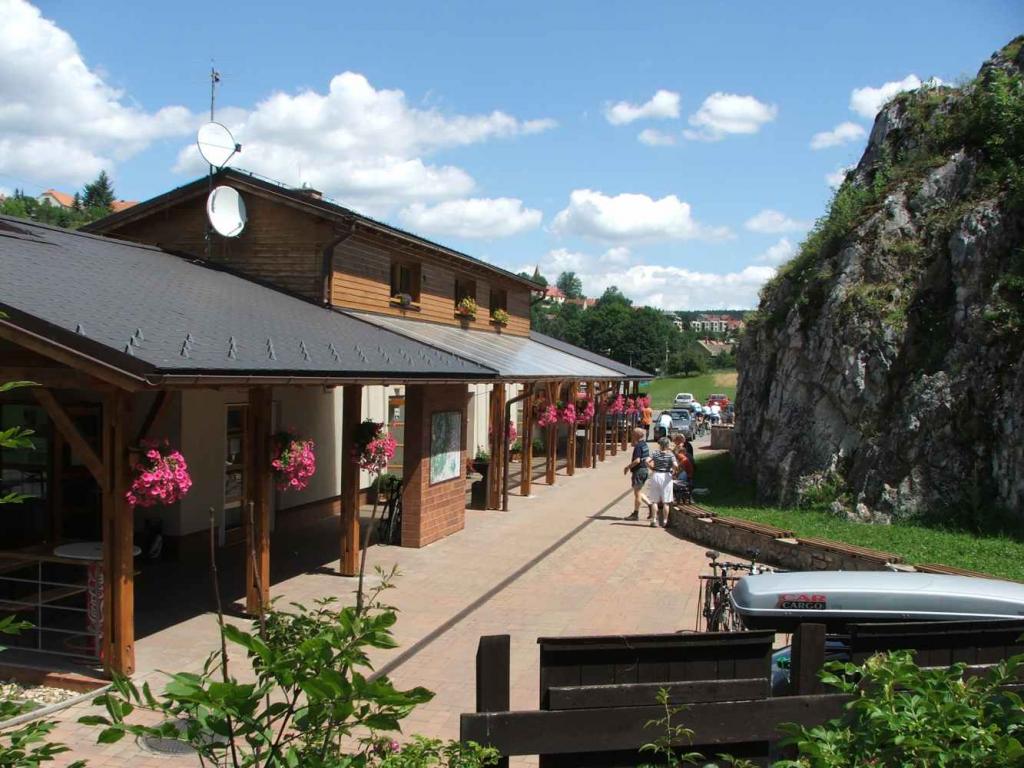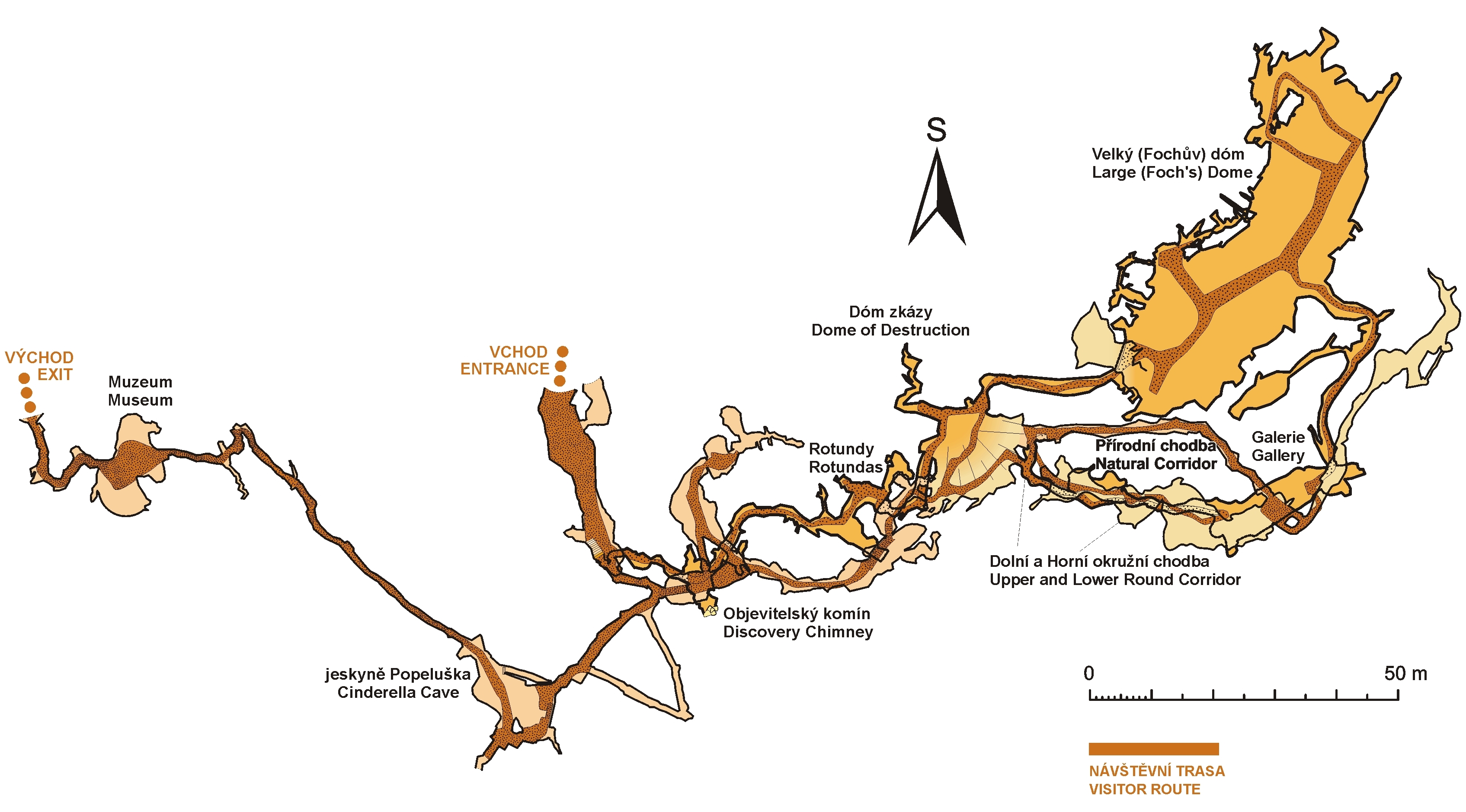Balcarka Cave - visit

The guided tour of the cave begins at the huge natural entry portal of the Balcar Rock. It has been known since long ago and was already used by Paleolithic people – pointed stones, bones and remains of fireplaces are remainders of them. Visitors will follow an artificial tunnel coming into a small space discovered in 1920 by Josef Šamalík, a local resident, farmer and also a deputy. The colorfulness of sinter coatings and dripstones make them very attractive. The first stop is in a place about 10 m high called the Wilson Rotundas. The bigger one is a beautifully modelled circular shaft covered with sinter cascades.
From here the route continues into the biggest hall of the Balcarka Cave – the Foch Dome. It is an elongated space with the dimensions of 65 x 15 x 10 meters named after a brave French marshal from World War I. The ceiling is formed by transparent stalactites and sinter curtains; the doline depression in the bottom of the cave shows evidence of so far unknown spaces that continue into the depth. When visitors finish admiring all of the picturesque parts of the Foch Dome, they step out into the parts discovered later, in the second half of the 1930s.

The Gallery, Natural Passage and also the Masaryk Jubilee Domes – are interconnected, but the pavement is successively in two height levels there. Now they are in the most beautiful part of the Moravian Karst – a dripstone decoration on the walls and ceilings is very rich, well-preserved and clear here. The walls of the Natural Passage are covered with sinter coatings. Pass the passage with the flat ceiling, the Theatre and the Sugar Fairytale, and they will get back to the parts discovered in 1924. The Dome of Destruction was created by collapsed ceiling, as demonstrated by agglomerated boulders on the bottom. The Madonna and the Cactus are very interesting, high sinterfalls made of calcite.
The cave route continues near the ceiling of the Wilson Rotundas to the Dome of Discoverers, also to the so called Stojan Chapel. When in 1924 the doline on the top of the Balcar Rock was dug through by local residents of Ostrov, they descended through the abyss right into this space. Its walls and ceiling are covered with moonmilk coating – a calcic pulpy material that is formed in a process probably supported by microorganisms. The last stop in the cave is called the Cinderella which was among the first spaces discovered in 1923 and only later it was interconnected with the main spaces of the Balcarka Cave.

Prohlídka jeskyně Balcarky s průvodcem začíná v mohutném vstupním portálu v Balcarově skále. Sluj byla známa odnepaměti a sloužila paleolitickému člověku jako sídliště. Byly zde učiněny nálezy opracovaných kamenů a kostí a také pozůstatky ohnišť. Uměle proraženou chodbou sestupují návštěvníci do prostor, které byly objeveny ostrovským občanem, poslancem Josefem Šamalíkem roku 1924. Nevelké prostory upoutají barevností sintrových náteků a stalagmitů.
